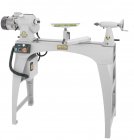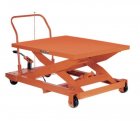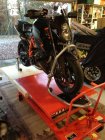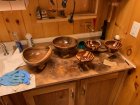Personal preference- I like cast iron machinery. Massive, dense, vibration killing. Production is intensive compared to small production welded steel machinery. When I bought my Vicmarc VL300 in 2001, I shopped it against every lathe I found at the '01 AAW convention, and in the terms of massiveness, it outshined every other machine in the building. The proof was in my tape measure and caliper.
[Edit- I'd like to defend the stationary motor control concept. I get the appeal of a movable motor control box, but... my lathe is just a few inches off the wall. My motor control box is actually mounted to the wall at a height about half way between elbow and shoulder, about a foot to the right of the lathe. This has the controls always in a safe zone, always in the same position, and after years of this orientation I don't even half to look for the speed knob, muscle memory knows just where to find it. This is a short bed, fixed-head lathe, this may not be the best solution for a longer machine or for movable headstocks, but the concept is worth consideration. I never have to think about where the controls are placed in operation.]
Deal killers- proprietary electronic packages. Non-standard, non-serviceable headstock bearings. Pretty much any "consumable" on the machine that is proprietary and subject to obsolescence. Without any personal experience, Nova lathes come to mind.
My Vicmarc VL200 (and former VL300) are powered by DC motors that have been, and will be, available forever, and controlled by a widely available, standardized AC input/DC output motor controller. (Leeson DC motor and Minarik drives on both lathes. Dead reliable, powerful, and long lasting. And if they break I have a replacement in hand quickly.) The headstock bearing, easily serviceable without special tooling, are tapered roller bearings available at your local bearing shop.






